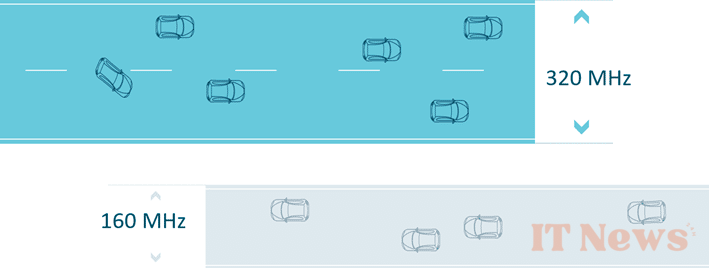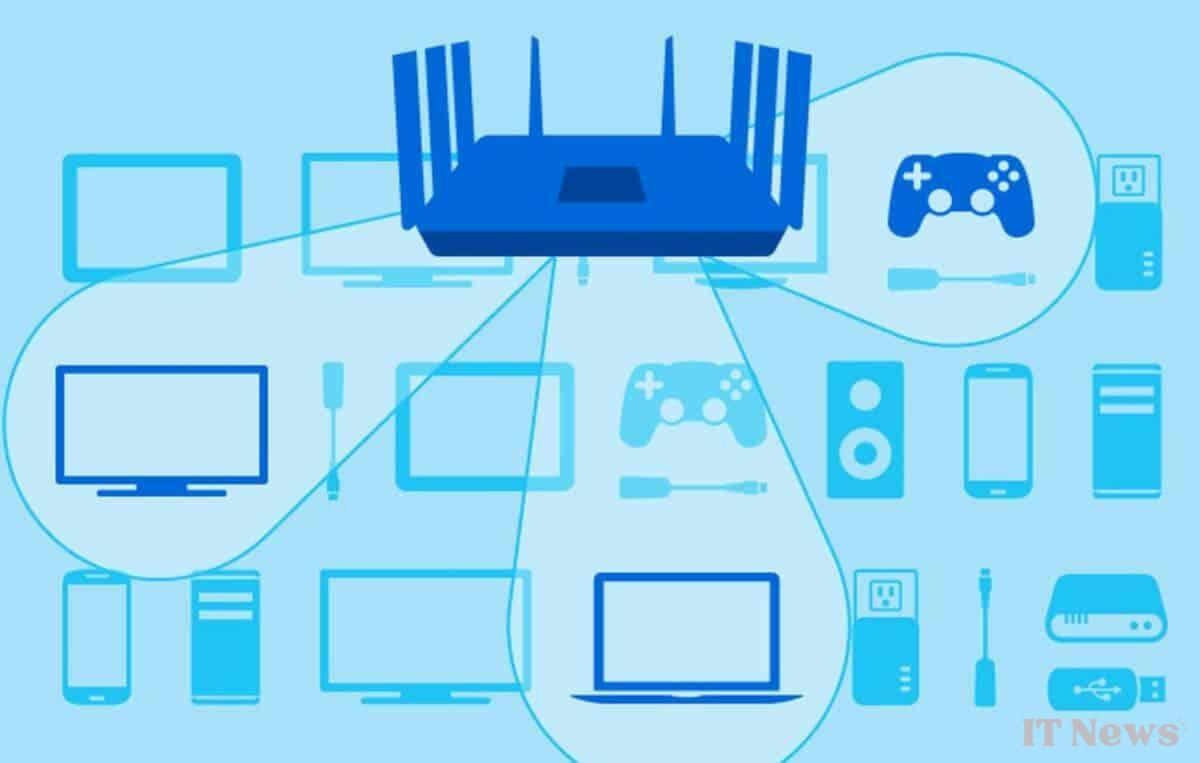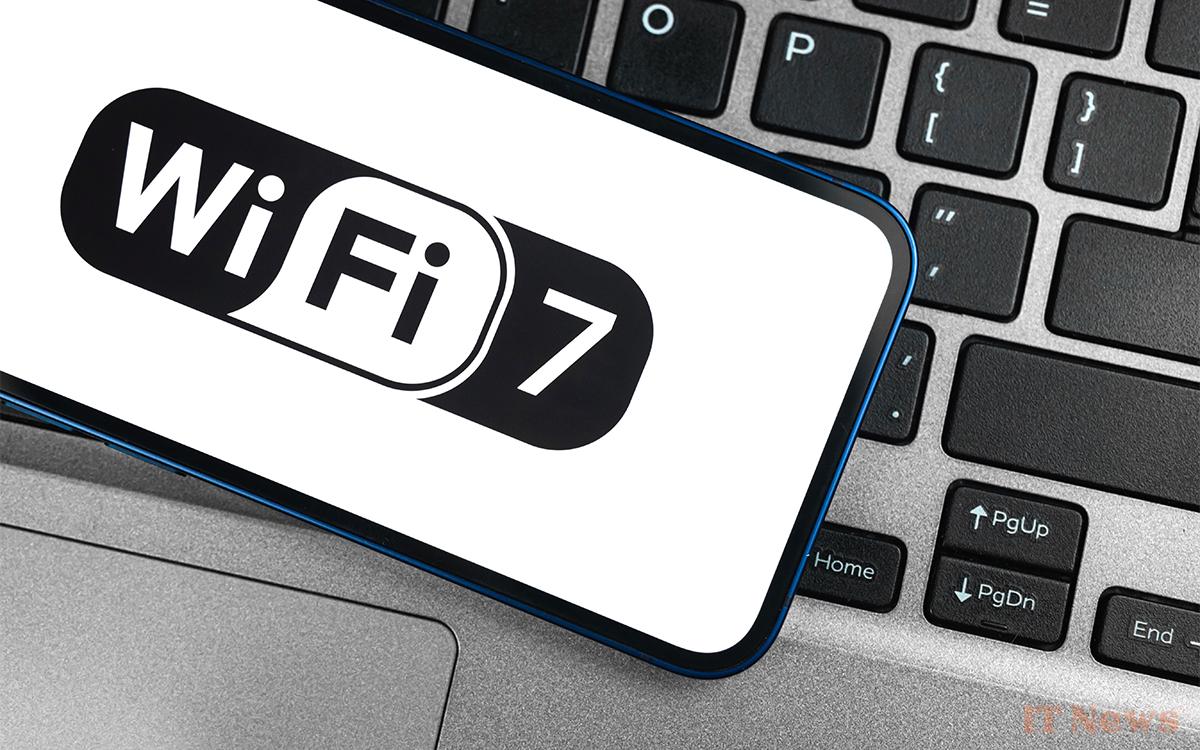Wi-Fi 7 follows on from Wi-Fi 6 and Wi-Fi 6E. This evolution of the wireless standard promises explosive speeds, lower latency, and better network management when multiple devices are connected. Channel size, next-generation OFDMA, 4096-QAM modulation, 16-stream MU-MIMO, and the new Multi-Link Operations feature—that's all that's changing with WiFi 7.
After WiFi 6 and WiFi 6E, which both helped improve the standard, we are about to welcome WiFi 7, the latest generation of wireless networking. This latest version of the standard brings additional benefits and new features that will make WiFi a technology offering an even better experience. According to MediaTek, there is even a chance that WiFi 7 will become the equivalent of Ethernet. This would be the first time that wireless technology has risen to the level of wired technology. We invite you to discover everything you need to know about WiFi 7.
What is Wi-Fi 7?
Like its predecessors, Wi-Fi 7 is part of the IEEE 802.11 set of standards for local wireless networks. It is called 802.11be, compared to 802.11ax for WiFi 6 or 802.11ac for WiFi 5, for example. Thanks to the integration of new technologies and improved WiFi channel management, WiFi 7 promises to be faster, less congested, and less prone to latency than WiFi 6 or WiFi 6E.
What are the technical specifications of Wi-Fi 7?
The characteristics of WiFi 7 are already known and are not expected to change between now and its commercialization. As with every generational leap, we are seeing an increase in the maximum theoretical speeds allowed by the standard. WiFi 7 would indeed be capable of reaching up to 46 Gb/s, a speed much higher than that of WiFi 6, limited to 9.6 Gb/s. Note that the future Wi-Fi 8 will not do better than 7 in terms of connection speed.
For individuals, it is not certain that this gain will be very useful, since most internet connections do not provide such performance. But WiFi 7 could really change the game and improve the experience in terms of speed for corporate or public WiFi networks.
WiFi 7 operates on three frequency bands: 2.4, 5 and 6 GHz. It therefore incorporates the main new feature brought by WiFi 6E with support for 6 GHz (between 5,945 and 6,425 MHz), which helps to relieve congestion in overused ranges, particularly in densely populated areas.
The other major new feature of WiFi 7 is the extension of the channel size, which increases to 320 MHz, twice as large as with WiFi 5 and WiFi 6. If we compare WiFi to a road network, these ultra-wide channels are the equivalent of a 3 or 4-lane highway, while the 160 MHz channels would be more like a national road. Since the highway allows more vehicles to move smoothly and quickly, 320 MHz channels are able to transmit more information at the same time, and therefore deliver better performance.
It is, among other things, this switch to 320 MHz channels that allows the speeds mentioned earlier to explode. Such a channel width also helps reduce delays, and therefore latency.
What are the advantages of Wi-Fi 7?
Wi-Fi 7 introduces new features and improves existing ones. OFDMA, a data multiplexing and encoding technique already present in Wi-Fi 6, is evolving. While this technique reduced latency by around 25% compared to Wi-Fi 5, the next-generation OFDMA is capable of reducing it by another 20%. To do this, it will better manage what are called RUs (Resource Units), units that divide packets so that they are sent faster.
With Wi-Fi 7, these RUs can be resized and are more efficiently distributed among different devices to optimize the network. And that's not all: until now, an RU that cannot be used for one reason or another could prevent the use of subsequent RUs. Thanks to WiFi 7, such a failure will have less impact on the management of other packets, resulting in lower overall latency.
Signal amplitude modulation is also undergoing a revolution. WiFi 6 quadrupled the flows of WiFi 5 (256-QAM to 1024-QAM), WiFi 7 in turn quadruples those of WiFi 6, going from 1024-QAM to 4096-QAM. By moving from a 10-bit to 12-bit architecture, and consequently increasing the volume of information bits transmitted per hertz, the bandwidth capacity becomes greater, which helps improve throughput.
MU-MIMO is not left behind. While the basic principle of the technology added with WiFi 6 remains the same, up to 16 data streams are now managed by the antennas of a WiFi 7-compatible router, compared to 8 currently. An upgrade that will primarily benefit high-end network equipment and will help improve the quality of home wireless connections.
Finally, the last major technology introduced with WiFi 7 is Multi-Link Operations (MLO), which allows a compatible device to use two frequency bands at the same time. Thanks to aggregation, a terminal running WiFi 7, such as a smartphone or a computer, will be able to connect to both a 2.4 GHz band and a 5 GHz band, for example. This should increase the available bandwidth, increase speeds and, above all, reduce latency.
What's interesting here is that, in addition to avoiding saturation, a device will be able to benefit from the advantages of different frequency bands: we know that 2.4 GHz has limited speeds, but which last the distance, while 5 GHz is much faster, but runs out very quickly as you move away from the router. Note that it is already possible to combine multiple frequency bands under the same SSID, but the device is not connected to them at the same time: it only chooses the one that offers the best performance, which is far from what MLO aggregation offers.
When will Wi-Fi 7 be available?
Wi-Fi 7 was first discussed even before the official launch of Wi-Fi 6, but it takes time for a standard to be included in commercial devices. The Wi-Fi Alliance, the consortium managing the protocol, must decide on the technical specifications to which the standard will be subject, a process that can be lengthy. A testing period must also be observed before implementation on products sold to the general public. The Wi-Fi Alliance officially launched Wi-Fi 7 in January 2024.
Since then, the first compatible devices have been certified, and some are already available for sale. But it takes years for a standard to become widespread, as users don't upgrade their equipment every year, especially not for home networking equipment. Furthermore, early adopters are often expensive, preventing them from becoming popular quickly. This is why operators that supply internet boxes and routers, as well as manufacturers of smartphones, computers, smart TVs, and TV boxes, are patient before switching to a new standard, with only a few high-end products enjoying it shortly after its launch.
For example, WiFi 6, launched in 2019, only started to really take off in homes in 2021/2022. We should therefore have to wait at least until 2025 or 2026 before we see Wi-Fi 7 become widely adopted. But early adopters will still be well served, with the first smartphones compatible with WiFi 7 starting in 2024. Samsung has made a habit of being the first to upgrade to the new generation of Wi-Fi and could do it again with its Galaxy S24 series, expected in early 2024. Intel has also announced that the first laptops equipped with WiFi 7 will be available in 2024, but that the number of models supporting the new protocol will be much greater in 2025.
A document from Intel and circulated on X (Twitter) suggested that only Windows 11 would support Wi-Fi 7, excluding Windows 10. But more recently, Intel has just published the technical specifications for two Wi-Fi 7 modules on its website. They both indicate compatibility between Windows 10 and Wi-Fi 7. The operating system released in 2015 will finally be eligible for it.
To benefit from it on Windows 11, you must have upgraded to version 24H2 and have installed a specific update.
Which devices are Wi-Fi 7 compatible?
The Wi-Fi Alliance maintains an updated list that you are invited to consult regularly. Note that being compatible with Wi-Fi 7 does not necessarily mean having received Wi-Fi 7 certification, which ensures optimal operation of the technology. This is what led Bouygues Telecom to file a complaint against Free for false advertising on the Freebox Ultra. Bouygues's Bbox Ultym WiFi 7 did receive certification.







0 Comments